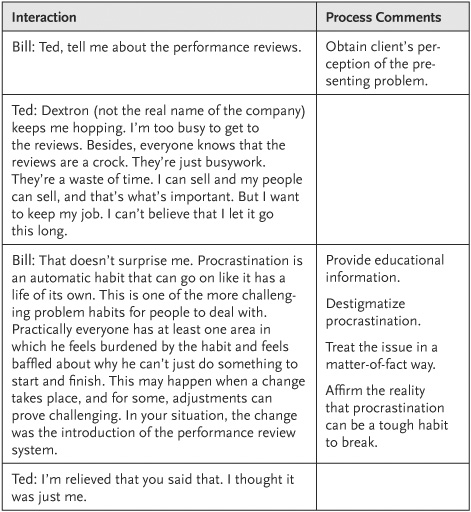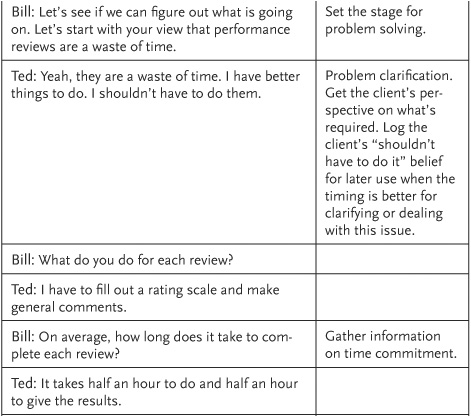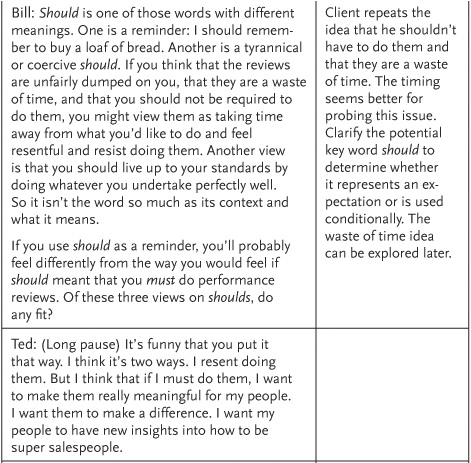End Procrastination Now! (25 page)
Read End Procrastination Now! Online
Authors: William D. Knaus

Now it's your turn to devise a plan. Here is a modified sample PERT planning framework for building counter-procrastination measures into a productive process.
Goal: ______________________________.
Your Counter-Procrastination Plan
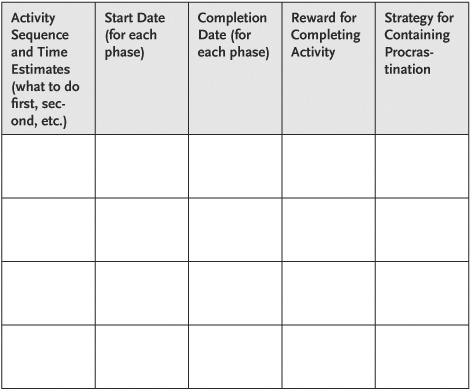
Can you avoid procrastination by emphasizing meeting performance objectives as outlined in the first column of the plan? Will setting start dates make a positive difference? Can setting
interim deadlines for each activity make a positive difference? Will mindfulness of procrastination and planning for procrastination make a positive difference? These questions can be answered through what you do to execute the plan.
Execution is easily seen. It is what you do to follow your plan outline. This is the time in the five-phase process where you test your plan to see what works, what doesn't, and what has potential if it is modified to fit the situation. A payoff is that you achieve the goal you set out to accomplish.
Execution implies motivation. However, where does the motivation come from? Is it from a lifetime of conditioning in which you learned to set and execute goals and then stretch to reach for them? How does this achievement motivation differ from chipping at a piece of flint to create a spearhead or gathering grain to store for the winter? When does the motivation start?
A common procrastination trap is waiting to feel inspired before you start. This puts the start time out into an indefinite future where the proximity of a deadline can trigger frenzied activity. You are likely to experience motivation if you set a short start date and then take the most basic steps. Even if you plod through the process without feeling that motivated, you'll have accomplished what you set out to do.
When you accept the dual challenge of following though on what you believe is important to do and facing an old procrastination foe, you can expect to experience reluctance and to resist getting on the do-it-now path. However, when you voluntarily subject yourself to the initial discomfort, you do so to help you achieve a longer-term goal of plowing forward against a sea of resistance until the resistance fades. Expecting and accepting discomfort as a part of the start-up phase is a start in the direction of greater self-efficacy. This step also helps train the mammalian brain (the horse) that discomfort is not dangerous.
What can you draw upon to bridge the gap between waiting and acting? When you start a productive process and a resistance arises, look to your resources from your SWLO and career congruence lists. What do you have going for you that can be matched against the emotional resistance? Is it flexibility, innovativeness, and resourcefulness? Can you call upon conscientiousness, common sense, and knowing how to profit from wise advice when you ask for it? By intentionally shifting from procrastination thinking and emotional resistance to applying what you have going for you, you can tip the balance in favor of accomplishment over procrastination.
There is rarely a quick and easy way out of a procrastination habit. Making meaningful personal changes is often like slogging through a knee-deep swamp. The wading is not easy. However, if you don't slog your way out, the chances are that you'll stay stuck. If it turns out that you move with a fleetness of foot that surprises you, so much the better.
We can separate evaluation from execution, but only artificially. Thus, the entire five-phase program is an interactive and organic process.
At different phases and points in time in the process of execution, missions, goals, plans, and evaluation form a grand convection in which the critical elements come together. You stick with the system when experience shows that you can make it work effectively. Changes come into play when it is clear that you'd be wise to try another way. This happens when parts of the plan are not workable or it would be too costly to make them work.
Evaluation as Feedback and Guide
. Evaluation is a form of feedback and guidance that gives you a measure of change and a basis for adjusting what you can next do to further your goals. Here are some feedback questions:
1. Have I accepted responsibility for taking the initiative and following through?
2. What have I accomplished by following a process of mission development, goal setting, planning, and executing strategy?
3. What have I learned that can further support my antiprocrastination campaign?
4. How can I apply this knowledge?
The following table pulls together problem analysis, setting a direction (mission and goals), plans, execution, and evaluation. In the five-phase column, you spell out what you're doing in each area. Then you note what you learned by following the process.
Your Five-Phase Process
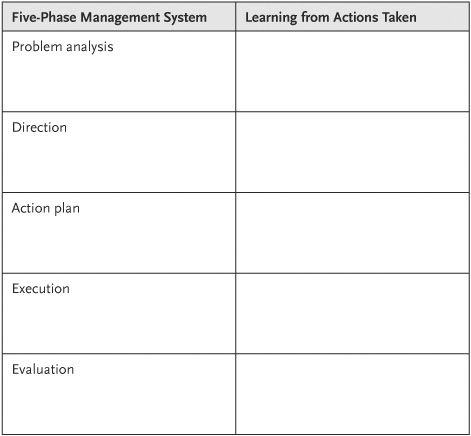
Careers and jobs are rarely perfect. However, since you spend a significant part of your life at work, why not accomplish what you can capably do in a reasonable way? By regulating your actions to exclude procrastination, as a by-product you're likely to accomplish more and have fewer regrets. You'll have more favorable things to report when you write your autobiography. Use the key idea and action plan to record what you've learned that can flesh out that autobiography.
What three ideas have you had that you can use to help yourself deal with procrastination thinking effectively? Write them down.
1.
2.
3.
What is your action plan? What are the three top actions that you can take to contend with adversity and propel yourself into positive territory? Write them down.
1.
2.
3.
What things did you do to implement these actions? Write them down.
1.
2.
3.
What things did you learn from applying the ideas and the action plan, and how can you next use this information? Write them down.
1.
2.
3.
Sample Therapy Script for a Procrastination Scenario
Ted was 40, married, and the father of two preteen daughters. He worked as a sales manager for a small manufacturing company. The company atmosphere was friendly and cooperative. His presenting problem was procrastinating on completing performance reviews.
For the third year, Ted was three months behind on completing his performance reviews. In the previous two years, his manager had completed them and gone over the results with each member of the sales force. This year was different. Ted could either finish the reviews or look for a new job. His manager gave him six additional weeks to finish, provided that he worked with an expert on overcoming procrastination. Both Ted and his boss simultaneously conferred with me over the phone about the seriousness of this matter.
Ted loved many aspects of his job, but not the performance reviews. His wife and daughters loved their home and their neighborhood. They preferred that he keep his current job. They had no
interest in relocating. However, even though Ted had made many promises to himself and others to do the reviews, he hadn't started. When he thought about starting, it was as if he had come up against a wall. Ted was eager to get help with his performance review procrastination.
The following interaction was edited to eliminate background information and diagnostic checks, to change identifying information, and to improve readability. It is broken out into two sections: (1) the therapeutic interaction and (2) comments on the CBT therapeutic process. Thereafter, you'll find a summary of additional steps that Ted took, and the outcome.
